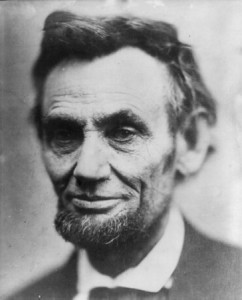 In 2006, a federal jury convicted Ken Lay and Jeff Skilling of lying to investors five years before about the financial health of Enron, the company they led as Chairman and CEO. It took Enron 16 years to grow to $65 billion in assets; it took only 24 days to go bankrupt in 2001. America discovered that the nation’s 7th largest corporation, charting futures of energy and power, was nothing more than a ‘house of cards’ as it became the largest corporate bankruptcy case in U.S. history. 20,000 employees lost their jobs. $2 billion of pension and retirement funds disappeared.
In 2006, a federal jury convicted Ken Lay and Jeff Skilling of lying to investors five years before about the financial health of Enron, the company they led as Chairman and CEO. It took Enron 16 years to grow to $65 billion in assets; it took only 24 days to go bankrupt in 2001. America discovered that the nation’s 7th largest corporation, charting futures of energy and power, was nothing more than a ‘house of cards’ as it became the largest corporate bankruptcy case in U.S. history. 20,000 employees lost their jobs. $2 billion of pension and retirement funds disappeared.
Investigators discovered that Lay and Skilling were booking current profits based on what they called the “hypothetical future value” of an idea, while hiding liabilities in off balance sheet accounts. In the several months prior to bankruptcy, while the retirement accounts of the rank and file employees were frozen, Lay and Skilling were cashing in $100’s of millions of Enron stock. Most agree these criminals deserve the fullest wrath our judicial system affords. But I wonder how far the rest of us are from the same fate. How easy is it to rationalize our actions bit by bit?
The Milgram Experiment: In the early 1960’s psychologist Stanley Milgram conducted a famous scientific experiment to test whether evil people possessed common characteristics making them do evil things or if normal people were capable of doing evil. Participants were told it was an experiment to test whether electric shocks would help people memorize lists.
In the experiment, Milgram persuades the participant to give what the participant believes are painful electric shocks to another subject, who is actually an actor, every time the actor gives a wrong response. The actor in the other room would scream and beat on the walls in pain; however, most participants continued to give shocks despite pleas for mercy from the actor. If the participant wanted to halt the experiment, Milgram told them he would take full responsibility and that the experiment must continue. Shockingly, 50% of Milgram’s participants were willing to “shock to the death” so long as the command came from a seemingly legitimate source.
We must admit that human nature has the potential to rationalize anything. It is God’s general grace that directs our steps and keeps us from our own self-destruction. Very little separates us from Lay and Skilling. Without God’s direction, we are capable of the same fate. God be with us!
“The mind of man plans his way, but the Lord directs his steps.” – King Solomon (Proverbs 16:9)


